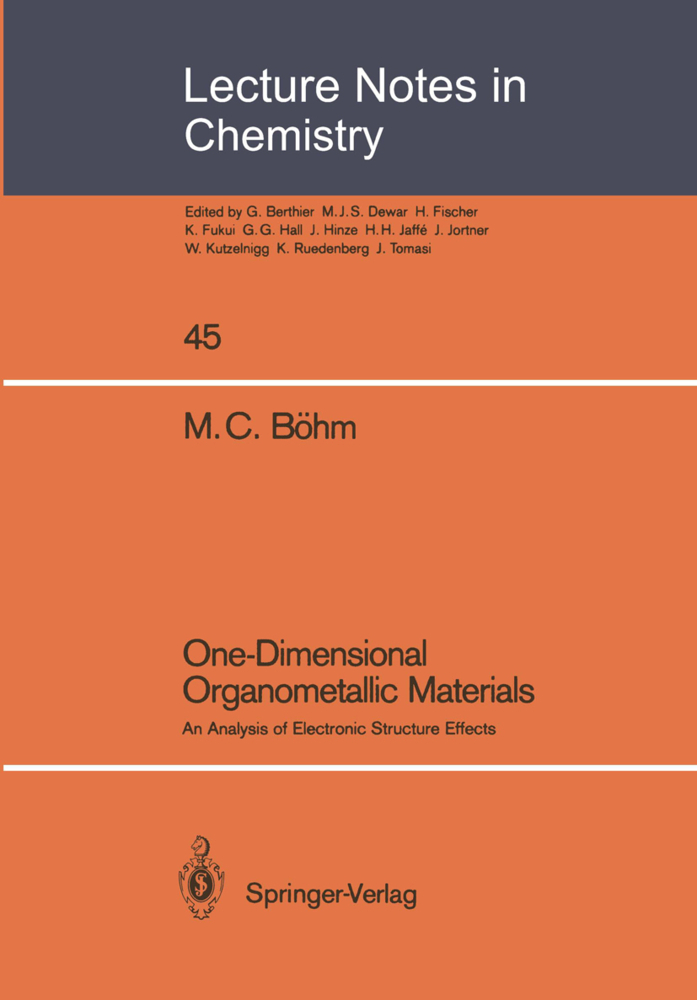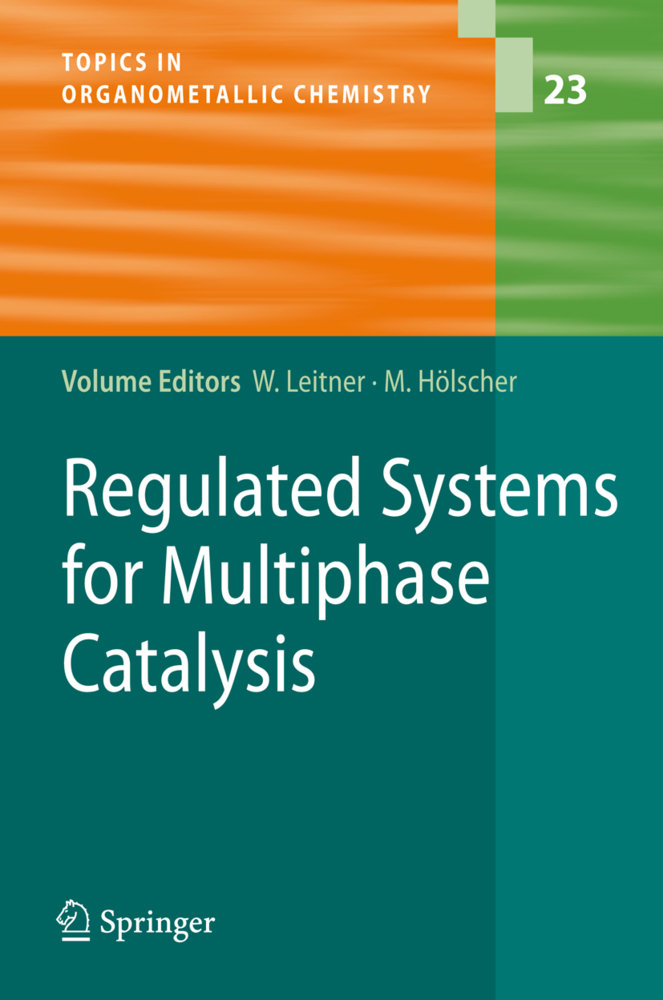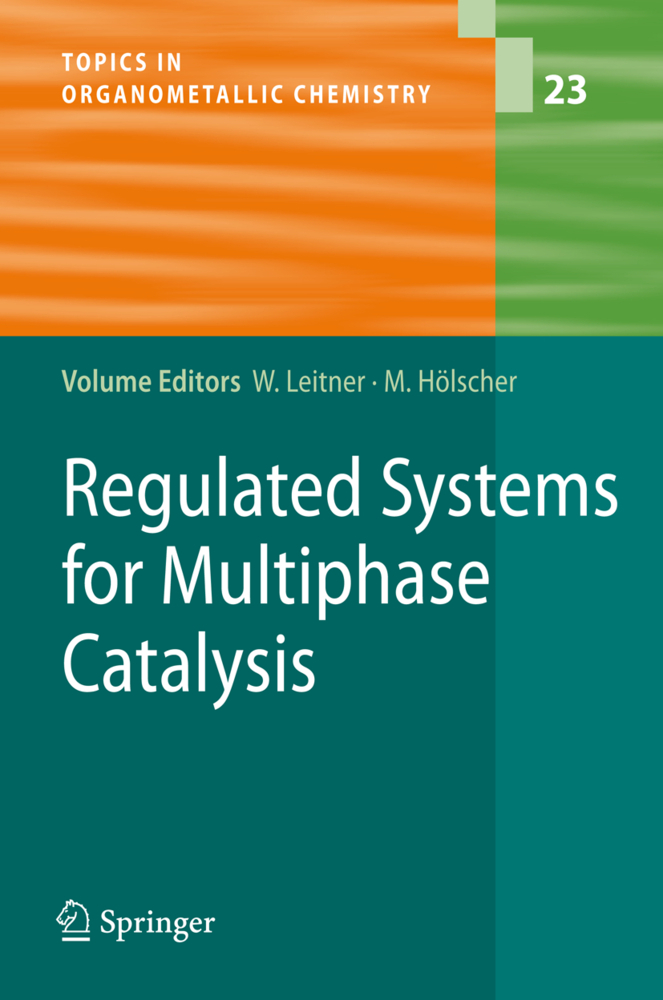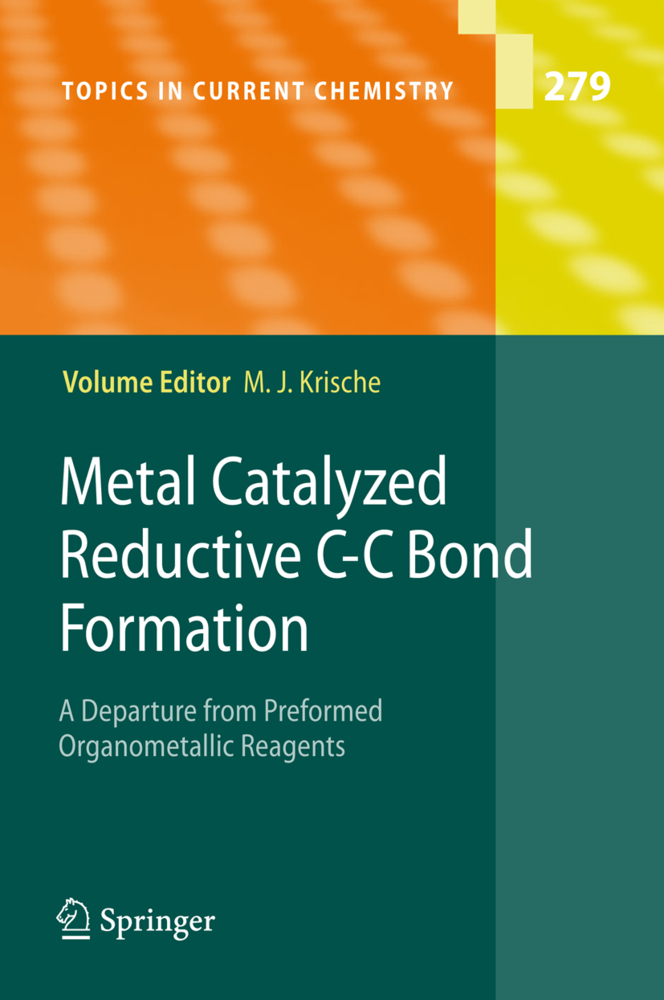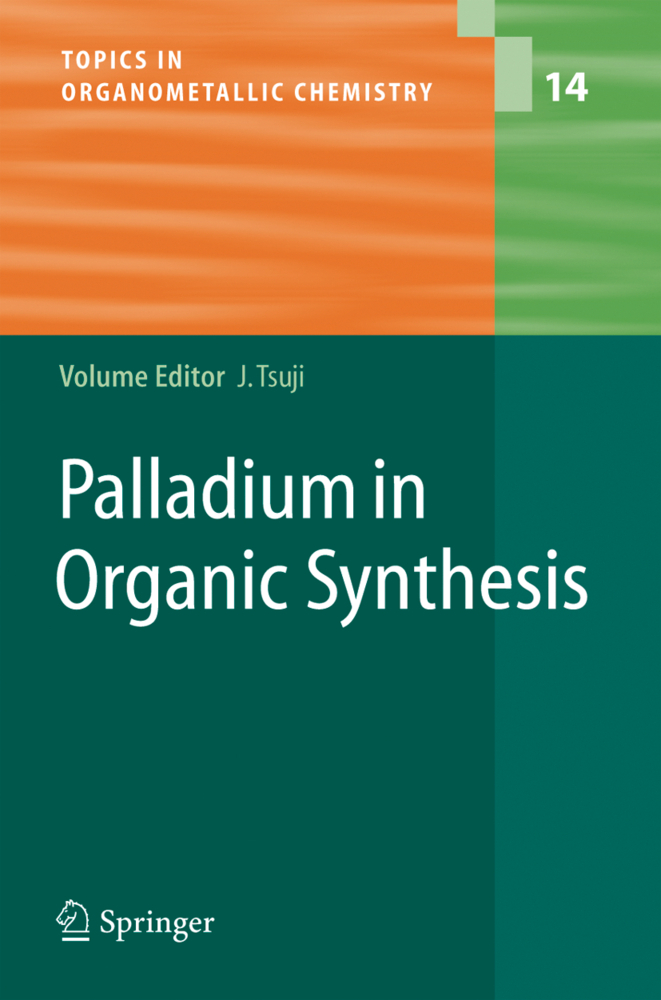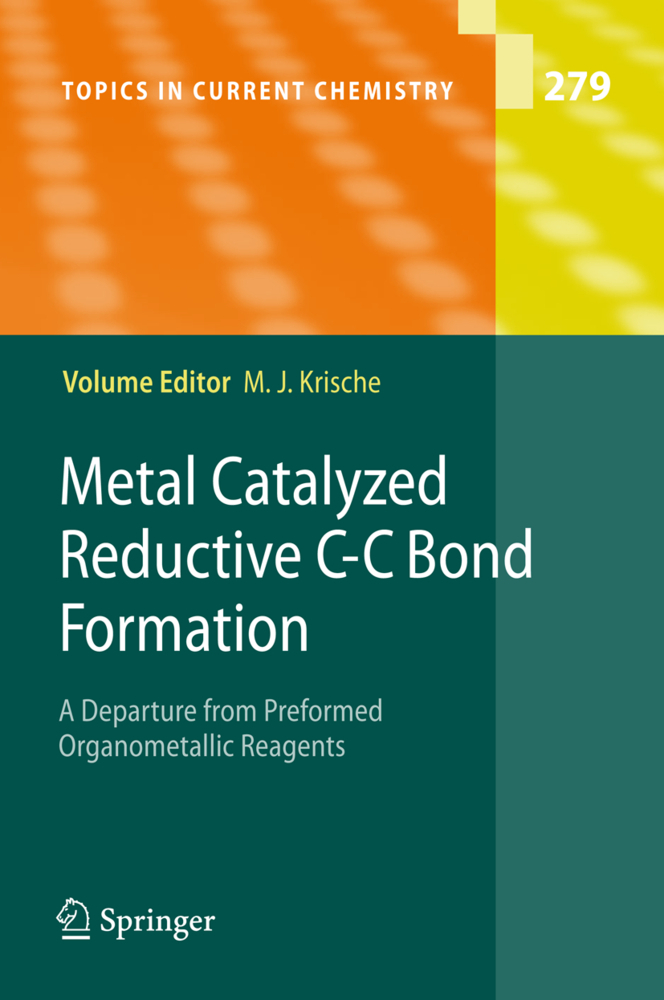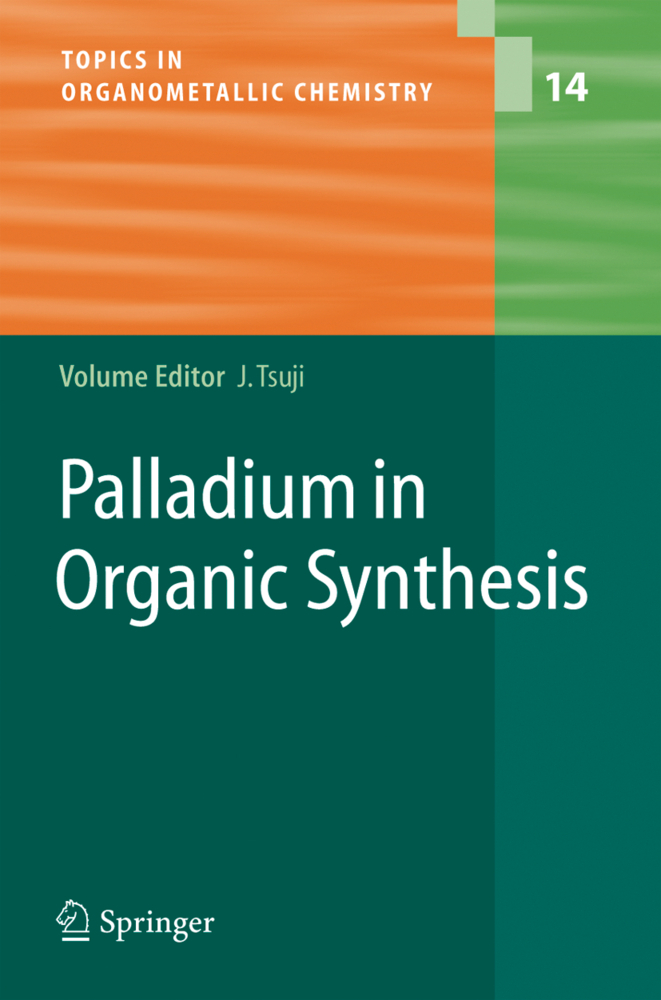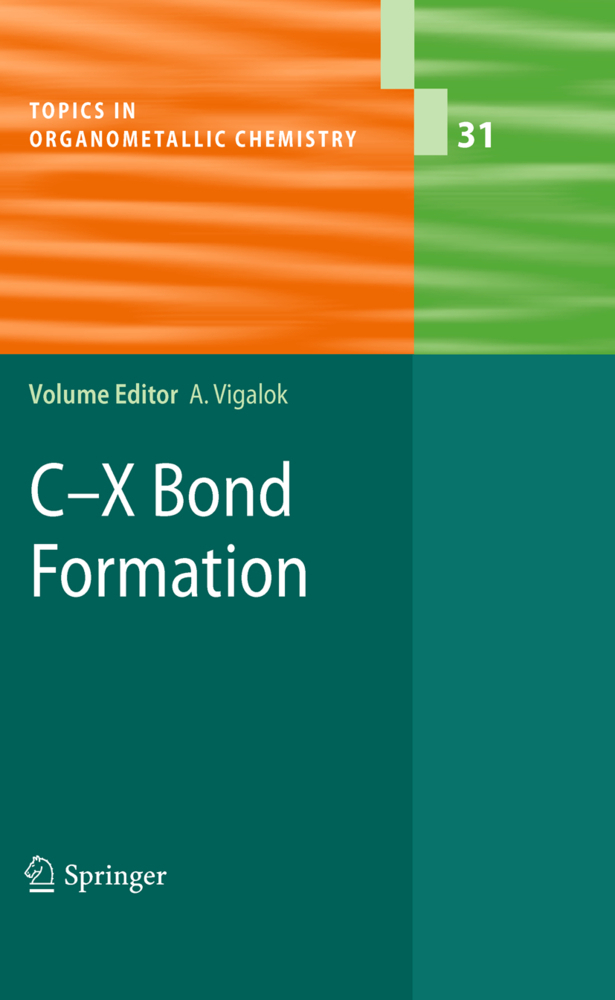One-Dimensional Organometallic Materials
An Analysis of Electronic Structure Effects
One-Dimensional Organometallic Materials
An Analysis of Electronic Structure Effects
This lecture note gives an analysis of electronic structure effects for a new class of molecular solids, i. e. one-dimensional organometal lic systems formed by transition-met. l atoms that are embedded in a matrix of macrocyclic organic ligands. These systems as well as orga nic metals have focused considerable interest due to the potential formation of high-mobility charge carriers. For the present author it is difficult to participate in this restriction on a single physical property (i. e. high electronic conductivities, technical applications, etc. ). The lecture note is hopefully a small contribution to enhance the general understanding of certain electronic properties in organo metallic polymers. Those problems have been considered in the first place that seem to form a theoretical deficit in one specific field of solid-state chemistry. For the reader it will become evident that this contribution is a compromise always guided and limited by boundaries: i) An attempt to present problems to a ·chemical· audience which have their roots in solid-state physics. ii) The model calculations are limited by the currently available computational facilities. This ·boundary· implies that the compu tational data a~e subject to severe theoretical approximations. iii) Theorists have often a strong tendency to identify their numeri cal results and models with physical effects. Also this lecture note is not free of this almost universal trend. Nevertheless the author hopes that this text leads to some insight into a rather modern research field. M. e. B6hm I.
II. Experimental Results and Global Band Structure Properties
II.1 One-Dimensional Building Principles in Organometallic Solids and General Band (Electronic) Structure Properties
II.2 Electric Conductivities of Partially Oxidized Organometallic 1D Systems
II.3 Electron Paramagnetic Resonance (EPR) Data of Organometallic Solids of Class I
References (Section II)
III. Theoretical Methods; Crystal Orbital (CO) Approaches
III.1 A (Semiempirical) Crystal Orbital Formalism
III.2 Nonlocal Hartree-Fock Exchange in Narrow-Band Materials
III.3 Electronic Correlations and Relaxations in One-Dimensional (Organometallic) Polymers
III.4 A Simple Electrostatic Model for Interchain Interactions in Quasi 1D Solids
References (Section III)
IV. Model Calculations in the Framework of a (Semiempirical) Crystal Orbital Approach
IV.1 Neighborstrand Interactions in One-Dimensional Tight-Binding Models. The (Tetrathiosquarato)nickel(II) System
IV.2 Band Structure Properties of One-Dimensional Polydecker Sandwich Systems
IV.3 Partially Oxidized Transition-Metal Polymers; Stabilization of Mixed Valence States
IV.4 The Band Structure of One-Dimensional (Tetrazaporphyrinato)Cobalt(II)
IV.5 The Band Structure of the One-Dimensional (Bisglyoximato)Ni(II) System
IV.6 Band Structures of (Porphyrinato)Ni(II) Systems
IV.7 The 1D Band Structure of Tetrathiotetracene
IV. 8 The Band Structure of Polyferrocenylene;
References (Section IV)
V. Outlook
Appendix (Abbreviations).
and Historical Review
References (Introduction)II. Experimental Results and Global Band Structure Properties
II.1 One-Dimensional Building Principles in Organometallic Solids and General Band (Electronic) Structure Properties
II.2 Electric Conductivities of Partially Oxidized Organometallic 1D Systems
II.3 Electron Paramagnetic Resonance (EPR) Data of Organometallic Solids of Class I
References (Section II)
III. Theoretical Methods; Crystal Orbital (CO) Approaches
III.1 A (Semiempirical) Crystal Orbital Formalism
III.2 Nonlocal Hartree-Fock Exchange in Narrow-Band Materials
III.3 Electronic Correlations and Relaxations in One-Dimensional (Organometallic) Polymers
III.4 A Simple Electrostatic Model for Interchain Interactions in Quasi 1D Solids
References (Section III)
IV. Model Calculations in the Framework of a (Semiempirical) Crystal Orbital Approach
IV.1 Neighborstrand Interactions in One-Dimensional Tight-Binding Models. The (Tetrathiosquarato)nickel(II) System
IV.2 Band Structure Properties of One-Dimensional Polydecker Sandwich Systems
IV.3 Partially Oxidized Transition-Metal Polymers; Stabilization of Mixed Valence States
IV.4 The Band Structure of One-Dimensional (Tetrazaporphyrinato)Cobalt(II)
IV.5 The Band Structure of the One-Dimensional (Bisglyoximato)Ni(II) System
IV.6 Band Structures of (Porphyrinato)Ni(II) Systems
IV.7 The 1D Band Structure of Tetrathiotetracene
IV. 8 The Band Structure of Polyferrocenylene;
References (Section IV)
V. Outlook
Appendix (Abbreviations).
Böhm, Michael C.
| ISBN | 978-3-540-17216-1 |
|---|---|
| Medientyp | Buch |
| Copyrightjahr | 1987 |
| Verlag | Springer, Berlin |
| Umfang | V, 181 Seiten |
| Sprache | Englisch |

